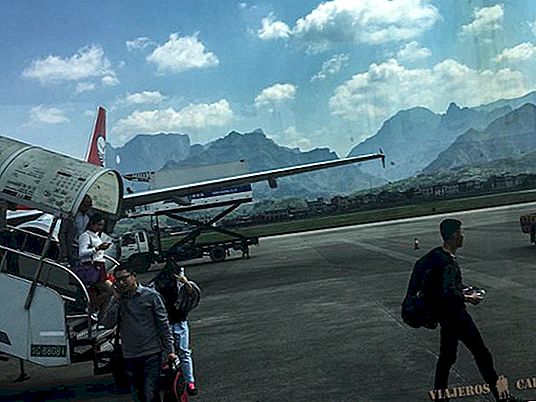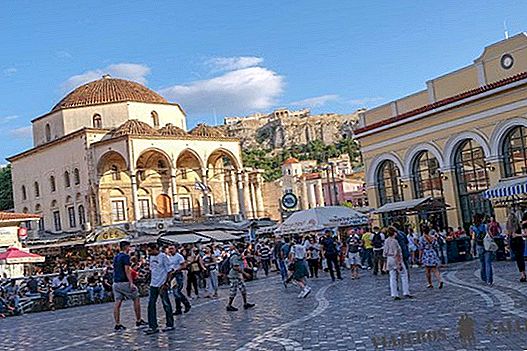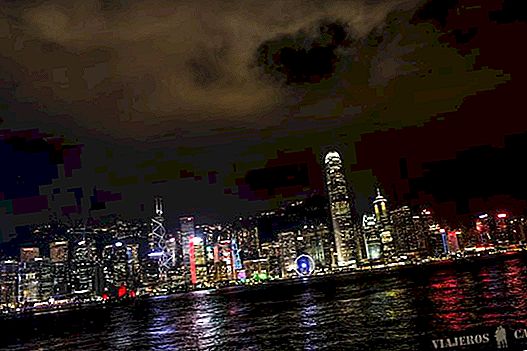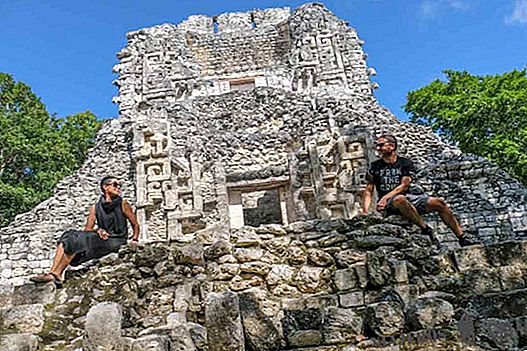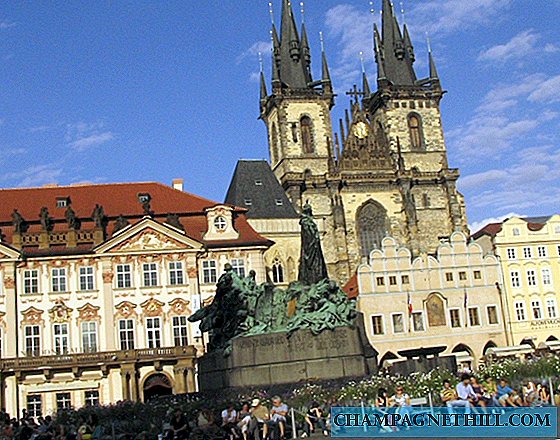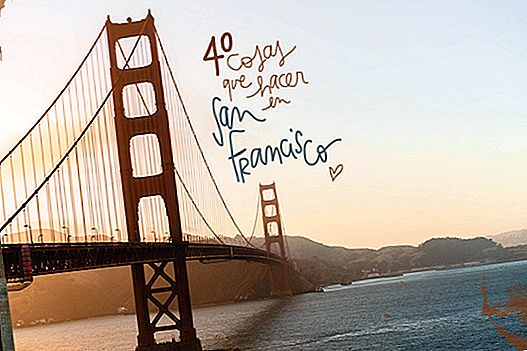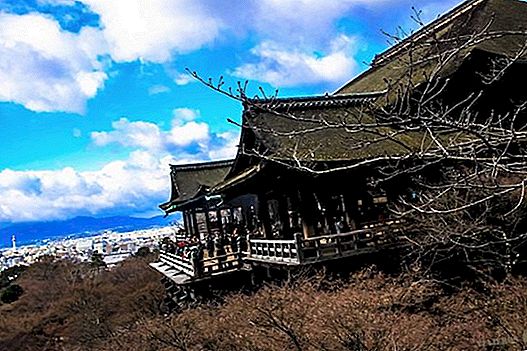Day 3: KYOTO: Kiyomizudera, Sanjusangen-do, Higashi Hongashi Temple, Nishi Hongan-ji, Kiyomizudera District, Gion, Pontocho
 Sunday, December 22, 2013
Sunday, December 22, 2013
Today is our first day in Kyoto and we woke up with a sweet taste at 6 in the morning at the first tone of the alarm clock determined to visit the Temples of Kyoto.
We are eager to begin to know the city that yesterday left us absorbed a few minutes after meeting it.
First of all, we take advantage of the small kitchen that we have integrated in the room of Citadines Kyoto Karasuma-Gojo and we have a good coffee that allows us to endure what we expect to be an intense day in our Trip to Japan.
A few minutes before 7 pm we are already in the streets of Kyoto With an expression on the face that sure, it will take us long to take off: amazement and happiness!
One of the things we did the days before the trip to Japan was to divide all the things we wanted to see and the Kyoto Temples Between the days we had in the city.
A good option to not miss anything about the city and learn more about its history is to book this tour of Kyoto with a guide in Spanish.
The “planning” of today begins by visiting the Temples of Kyoto Higashi Hongashi and Nishi Hongan-ji that are very close to each other, we could almost say that they are located opposite each other.
We have these two temples less than 5 minutes from the hotel, so we decided that it will be the first visit of the day next to Shoseien Park, which is also in the same area.
But here comes our first setback when they tell us that the gardens open at 9 in the morning.
We have to make a change of plans and seeing that it is still very soon and the city has almost not woken up, we decided to go to the Kyoto Station, where yesterday we saw a Starbucks and thus sit quietly for breakfast and restructure today’s visits a bit.
And so we do, we arrive in less than 5 minutes to what will become our usual cafeteria and we order a couple of pastries plus a cappuccino and a coffee for 1190 yen. We believe that this has been the time we have had the cheapest breakfast at this establishment!

Our first breakfast in Kyoto !!
With a full stomach and full of energy, we are going to the Kyoto Station, where we go up to the Sky Garden, located just in front of the famous Kyoto Tower.

Kyoto Tower, in front of Kyoto Station
The building of the Kyoto Station It is an impressive structure of steel and glass, as if it were a futuristic cathedral for the era of transport.

Kyoto Station !!
The Kyoto Station They opened it in September 1997 and got all kinds of criticism. Despite all the criticisms, we have been impressed by the huge atrium that rises above the main floor.

In the bowels of Kyoto Station
One of the things that they strongly recommend is to go up the escalators on the east side of the 7th floor and go up to the 11th aerial platform, located above the main floor.

Christmas has arrived at Kyoto Station
From here we have stunning views that allow us to get an idea of what it is Kyoto and the things we still have to visit!

Kyoto Station
We are here just under 20 minutes and consulting the guide, we decided to go to another one of the Kyoto Temples, Toji Temple, which is only 15 minutes from the station.
The truth is that we thought that everything would be much further, but from what we have been able to verify so far, all the points of interest in an area are quite close to each other.
But in the end, when we are leaving the station, we change our mind to see that we have just in front of the bus station and prefer to improvise today, starting by taking out two 24-hour bus vouchers for 500 yen each, which we They will allow buses to be used as many times as we want for a period of 24 hours.

One of the bus routes in Kyoto
We get the bonuses on the machines that are right in front of the bus stops and seeing that bus number 28 leads to one of the Kyoto Temples most famous, the Kiyomizudera Temple and just arrived, we don't think about it and we got on!

Our first bus in Kyoto
Long live the change of plans and improvisation, which we are not going to deceive, are very good from time to time.
So without thinking we are going to meet one of the Most important temples in Kyoto.
We enter through the back of the bus and start touring the streets of Kyoto again with that smile in our mouth that we believe has not been taken away from us since we arrived ...
By the way, we have already said that we love it Japan? 😉
More practical information to prepare your trip to Kyoto
- 50 things to see and do in Kyoto
- 10 essential places to visit in Kyoto
- The 5 best tours and excursions in Kyoto
- The best tips for traveling to Japan
- The best travel insurance for Japan
- 10 essential places to see in Japan
- Where to eat in Kyoto: Recommended restaurants
- Book here your JRP of 7.14 or 21 days with shipping included
- How to use the Japan Rail Pass
With the application that we download in the offline map mobile, we are controlling the stops that the bus is making and thus not get confused and move on from ours.
This discovery for us has been perfect and of course we will put it into practice in future trips, because with the very bad orientation we have, it frees us from more than one lap!
After 15 minutes on the bus we arrive at the stop indicating Kiyomizudera Temple and although we want to climb the famous Teapot Street, with excitement, we begin to climb the first street we see that leads to the temple and after 10 minutes of climbing, one of the Japan's most important temples, the Kiyomizudera Temple.

We begin the ascent to Kiyomizudera

One of the hundreds of vending machines we found on the way to Kiyomizudera

And finally ... Kiyomizudera
Upon arrival at the site, we pay the entrance fee of 300 yen per person and without much entertainment, we go straight to get lost in every corner we can.

Kiyomizudera Temple Entrance
The Kiyomizudera Temple It was first erected in 798, but the current buildings are reconstructions of 1633.

Kiyomizudera Temple Pagoda
As part of the Buddhist school Hosso, which was created in Nara, has managed to survive the multiple intrigues of the Buddhist schools of Kyoto through the centuries and now it is one of the Japan's most famous temples, so it is usually overflowing with people.

Kiyomizudera Temple

Kiyomizudera Temple

Photographing the Kiyomizudera Temple
In the main room there is a large terrace that rests on hundreds of columns and protrudes above the hillside.

Main Hall of the Kiyomizudera Temple

First calligraphy of the year at the Kiyomizudera Temple

Kiyomizudera Temple

In the Main Hall of the Kiyomizudera Temple

Kiyomizudera Temple

Details in the Kiyomizudera Temple

Main Hall of the Kiyomizudera Temple. Kyoto Temples
The enclosure of Kiyomizudera Temple, is dotted with other monuments and sanctuaries.

Corners of the Kiyomizudera Temple

Kiyomizudera Temple. Kyoto Temples
In Jishu-jinja, the garden sanctuary, the traveler tries to make love by walking with his eyes closed between two stones located 18 meters from each other.

Jinshu-jinja Kiyomizudera Temple

Jinshu-jinja details. Kiyomizudera Temple

Jinshu-jinja details. Kiyomizudera Temple

One of the "stones of love" of Jinshu-jinja. Kiyomizudera Temple
We take the opportunity to make the first purchase of this Trip to Japan and we get agency with some of the famous charms they sell in all Japan temples.

Kyoto views from the Kiyomizudera Temple

Kyoto views from the Kiyomizudera Temple
The Kiyomizudera Temple It is full of people, something that they had already warned us, no matter how soon we arrived, but we have to say that we believe that we are the only Westerners of all the people who have gathered in the same place.
We have spent time flying and when we look at the clock we see that it is after 10.30 in the morning, so we begin to take the road back, passing first through the sacred spring.

Sacred Spring of the Kiyomizudera Temple
Below the Main Hall, there is the Otowa-no-taki spring, where travelers drink from the sacred water that, it is believed, has therapeutic properties.

Sacred Spring of the Kiyomizudera Temple
We leave the enclosure of Kiyomizudera Temple totally convinced that if this is the first thing he has offered us Kyoto, everything we have left to see will exceed our expectations.

Main Hall of the Kiyomizudera Temple

Looking back when we leave the Kiyomizudera Temple
And then, how could it be otherwise, we take the famous Teapot Street, where we cannot avoid buying some souvenirs.
The steep slope that goes up to the Kiyomizudera Temple It is called Chawan-zaka or Teapot Street and is lined with countless stores where handicrafts are sold from Kyoto, fast food, souvenirs ...

Teapot Street
We lose track of time again and we again have a sense of lack of time that happens to us on many of our trips.
It is that feeling of being in a place that we like very much, that “we have fallen in love with” and we believe that we will not have time to squeeze it as we would like…
When we look at the clock again, it is almost 12 in the morning and although in another time we would not have worried much about the weather, being December, we have to tell that at 16.30h it starts to get dark, so the hours of visits They reduce a lot and it's time to hurry a little in the morning.
The next visit of the day we decided to be another of the Kyoto Temples more famous, Sanjusangen-do, which is a few minutes walk from the Kiyomizudera Temple.
Upon arrival we pay 600 yen per person, we leave our boots in the boxes prepared for that, we put on some slippers that facilitate us and we enter one of the most beautiful places in Kyoto.

Sanjusangen-do
As soon as we enter, the smell of incense invades us and with that we only intuit that everything we see from now on will be something we will never forget.

Colors in Sanjusangen-do
There are no words that can describe the Sanjusangen-do Temple. As much as we turn our heads, it is impossible to find an adjective that simply comes close to what we really have before our eyes.

Sanjuagendo
The Sanjusangen-do Temple It was built in 1164 at the request of the retired Emperor Go-shirakawa and was reduced to ashes in 1249, but a replica was erected in 1266.
In the name of the temple it refers to the 33 sanjusan, spaces, that are between the columns of this narrow and elongated building that houses 1001 statues of Kannon, the Buddhist goddess of mercy or that of the thousand arms.
The great Kannon is flanked on both sides by 500 smaller images of Kannon, perfectly aligned.
inside of Sanjusangen-do Temple They don't let us take pictures and the truth is that we appreciate it in a certain way, since the sensation of having to keep those images in our retinas forever, make us observe if everything that surrounds us fits more intensely.
In the back of the room there are 28 statues guarded in a multitude of expressive postures.

Sanjusangen-do. Kyoto Temples
After just over 40 minutes inside the Sanjuagendo TempleAs much as our watch says we have to go, our body insists on staying for a while longer, so we walk around the enclosure surrounding the temple and enjoying for a few minutes more than one of the most special places we have ever visited.

Exterior views of the Sanjusangen-do Temple
When we finish the visit, it's a little after 1 noon, so it's time to get back on track, this time towards Shoseien again.
But being at the same door and valuing the time we have, we prefer to go before the Temples of Kyoto Higashi Hongashi, which are just across the street and thus advance this visit.
Admission is free and we find that one of the parts of the temple is being restored, so it is covered with scaffolding and covered.

Higashi Hongashi Kyoto Temples
Before we can enter, we take off our shoes, leave them in one of the lockers and enter. At this point we will say that we had read and they had warned us to wear thermal clothing, especially socks because of how cold the floor is.
We have not noticed, really. It's cold, but having to leave your shoes just to get inside the temples, the cold is almost not noticeable.
In addition, in many of them, they leave you some slippers, so the cold is still less noticeable.
We have that amazing feeling that is accompanying us so much since we arrived at Japan and that we believe that we will not leave until we leave this country.

Interior of Higashi Hongashi. Kyoto Temples
The Higashi Hongashi Temple was founded when Ieyasu Tokugawa achieved the spin-off of the Jodo Shin-shu Buddhist school.
They don't let you take pictures inside and thinking about it, maybe it's the best, to keep the memories in our memory.
Book the best rated tours and excursions in Kyoto by travelers in Spanish and English:
- Guided tour of Kyoto
- Excursion to Nara and Inari
- Excursion to Osaka
- Himeji and Kobe excursion
- Excursion to Arashiyama and the imperial town of Uji-More Excursions and Tours in Kyoto here
It's almost 2 in the afternoon when we leave and although the call from the stomach is beginning to be present, we make our way to Nishi Hongan-ji that is right in front.
The moment we are in front of us, we cannot feel anything other than grandiosity. We feel tiny standing in front.

Nishi Hongan-ji
We take off our boots and just enter, a smell of cinnamon-incense, welcomes us ...
We don't know exactly the reason, but we are filled with respect and incredible peace. It is one of those places that have a special energy ...

Touring Nishi Honga-ji
It may sound weird and even funny, but guided by the sense of smell right now, we move to Bethlehem, in Lisbon and see ourselves tasting the famous Belem cupcakes.
Maybe this is the consequence of not having eaten anything since breakfast 😉
Toyotomi Hideyoshi built this temple in 1591.
It was created as the headquarters of the Jodo Shin-shu Buddhist school, which had accumulated a very intense power.
The temple consists of 5 buildings, some of which are currently being restored and show some of the most refined examples of architecture and artistic success of the Azuchi-Momoyama period.
The dazzling Kara-mon Gate is decorated on the basis of a complicated carving and was transported from Fushimi-jo.

Kara-mon gate in Nishi Honga-ji

Nishi Honga-ji
We are more than half an hour in Nishi Hongan-ji and when we leave we believe that now it is time to eat, so we cross the road and take the bus number 9 that in a few minutes leaves us in the Kyoto Station, where we want to look for somewhere to eat.
We take a few turns, including a good walk through the bottom of the Kyoto Station, where we get lost and go back to the street a neighborhood above ... and we ended up in a restaurant, very close to the station, where we ordered some gyozas and two yakisoba more water for 1994 yen.

Eating in Kyoto

Yakisoba in Kyoto
We eat of vice, although the noodles bite in an exaggerated way, something that we later verify is our mistake, since in the letter they clearly specify “hot” 😉
At the table where they serve us we have an iron in the middle, where we can make the noodles to our liking.

Enjoying Japanese cuisine. Kyoto
Our first contact with Japanese cuisine and restaurants is a success!
Here we also know the bells, which explain that we have to press when we have already decided that we want to eat or if we need anything else.
They offer us just sit the wipe with which we have to clean our hands and if we want the face and when paying, they leave the bill on the table, but we have to take it to the exit area, where in most the restaurants, if not all, is the box, where they charge you.
When we have finished eating it is 4 in the afternoon and after analyzing a bit today while we ate, we have decided that we will return to the area of Kiyomizudera Temple to walk through the most emblematic streets and especially to know some that this morning we skipped due to misguidance and we have confirmed now.
And being the time it is, we decided that it can be one of the best places to live the first sunset in Kyoto.
We return to the Kyoto Station and this time, the chosen bus is the famous number 100, which runs through all the most popular visits of Kyoto.
At the different bus stops at the station, you will find signs that indicate the stops they make and at the top, the “most famous” tour of the route, so it is very intuitive to choose the one that takes us to the right place.
Also in the Kyoto Tourist Office They can give you a map with the routes of all buses, which is an ideal way to get your bearings.
Once on the bus, we started touring the streets of Kyoto which at this time are totally changed, with many shops lit.
Once we arrive at the bus stop Kiyomizudera Temple, we got off and this time we started the ascent through the Teapot Street, now enjoying the sunset atmosphere.

Kiyomizudera Temple at sunset
We are entering the Japan more traditional and we have the feeling of never wanting to leave here.

Sannen-zaka in Kyoto
We met many girls dressed as geisha, accompanied by their boys and we can't help stealing some photos.
Sannen-zaka is a picturesque street, around the Kiyomizudera Temple, bordered by old wooden houses, traditional shops and restaurants.
This stretch of street is full of tea houses and cafes.

Sannen-zaka in Kyoto
Halfway to Sannen-zaka, the road turns to the left, continues a little and then goes down on the right, along a flight of stairs until you reach Ninen-zaka, another picturesque street, flanked by houses, shops and houses of historical tea.

Ninnen-zaka in Kyoto

Ninnen-zaka in Kyoto

Enjoying the "blue hour" in Ninnen-zaka. Kyoto

Ninnen-zaka Kyoto
At the end of Ninen-zaka you have to zigzag first to the left and then to the right and continue north.
There we will find Ishibei-koji, possibly one of the most beautiful streets in Kyoto.

Night comes in Ninnen-zaka. Kyoto

Ishibei-koji, one of the most beautiful streets in Kyoto
After getting lost for being streets more than 2 hours and almost without realizing it, we check the GPS and see that we are next to the Gion Neighborhood, so being already more than 6 in the afternoon, we see no better option than entering one of the most famous neighborhoods in Japan.

Gion Neighborhood Details
Gion It is roughly between Sanjo-dori and Gojo-dori. Hanami.koji Street goes from north to south and cuts Shijo-dori in two.

Gion Neighborhood
The southern part is lined with restaurants and traditional tea houses from the 17th century, many of which are exclusive establishments for geisha performances.

Gion Neighborhood Details
From the moment we enter Gion We begin to lose by its small streets dimly lit and increasingly in love with them, suddenly we meet a taxi with 2 geishas inside.

And suddenly ... geisha!

The least we expected this evening was to meet two geisha face to face
We had read that at this time it was unlikely to see any, since they are going to spend the end of the year with their family ... so it has caught us totally by surprise.
A good option is to book a traditional Maiko show and learn a little more about Japanese culture.

Enjoying gion
We keep getting lost among its streets and it is already past 8 pm, we decide that it is time to head towards another of the Kyoto's most famous places: Pontocho, which is less than 10 minutes walk from the Gion Neighborhood.

Pontocho
The traditional nightlife district of Pontocho It is a narrow street that runs between Sanjo-dori and Shijo-dori, west of Kamo-gawa.
The best option is to go at night, as we have done, when traditional wooden buildings and hanging lanterns recreate the wonderful atmosphere of the old Japan.

Pontocho

Pontocho streets
We walk through this alley parallel to the river, where we find hundreds of restaurants, with their lanterns lit at the door, which invite us to enter each of them.

Pontocho

Enjoying Pontocho
But before deciding on one, we want to continue traveling the street, impregnated with the smell of food, until we reach the other end and decide that the time has come to decide for one.

"Plastic letters" in Pontocho
Seeing the letters they have abroad, we decide on one of the restaurants where we go to a typical low table, where we have to take off our shoes and order two tempura dishes, plus one of sushi assortment and two waters for 2363 yen.

Dining in Pontocho
Japanese cuisine has us totally hooked. We are already thinking about how much we will miss her and that today is the first day of Trip to Japan.
When we have finished dinner it is almost 10 at night and after a very complete and reorganized day at many points, we decided that we should end the day, so we take a bus that takes us directly to the Kyoto Station, which has become our base of displacements and from here we set our course hotel in Kyoto, the Citadines Kyoto Karasuma-Gojo.
But before arriving we stop at another “usual”, 7 Eleven, where we make some purchases to recharge from time to time.
We fall in our fluffy each and after that we only remember one thing ... the beautiful images of an incredible city, Kyoto…

Kiyomizudera Temple

Kiyomizudera Temple

Blue hour arrives at Ninnen-zaka in Kyoto
 Day 4
Day 4KYOTO - Shimogamo-Jinja, Kinkakuji or Golden Pavilion, Ryoanji, Ninnaji, Arashiyama


 Book the best rated tours and excursions in Kyoto by travelers in Spanish and English:
Book the best rated tours and excursions in Kyoto by travelers in Spanish and English: